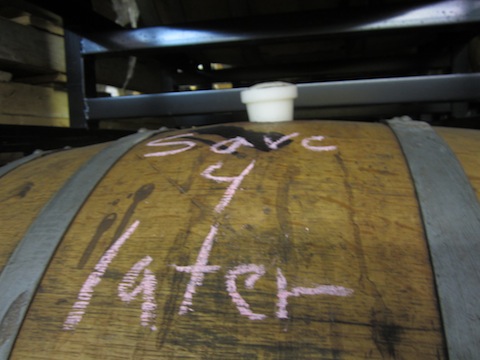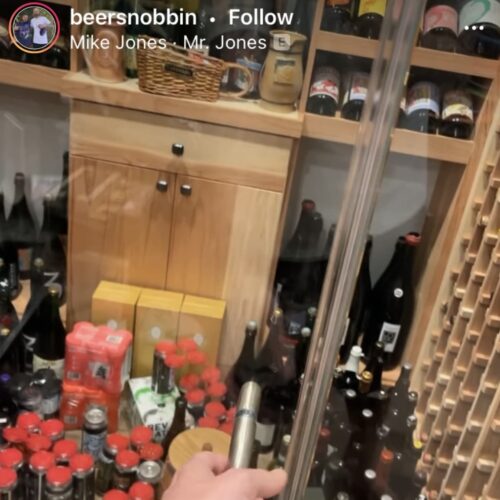
Here is the topic for March courtesy of Pints and Pubs: The Beer audit
“Once or twice a year I take a beer audit. I open cupboards and boxes and just have a good look at what’s there. Some beers get moved about, some make it from a box into the fridge, others get pushed further to the back of the cupboard for another day. Often I just stare at the bottles for a while and think about when I’ll drink them. Apart from the enjoyment of just looking at a hoard of beer, It tells me something about my drinking habits.
I store too many bottles – over 150 at the last count, which would keep me in beer for over a month, compared to less than a week’s worth of food – but evidently that’s still not enough bottles as I return with more every time I leave the house.
I have a tendency to hoard strong, dark beers – great for a winter evening, not so great when a lazy sunny afternoon starts with a 9% imperial stout and then gets stronger.
My cellaring could be improved. I found three beers from breweries that closed last year. I found these, not hidden away in a box under the stairs, but in the fridge. The fridge!!!
My attempts to age beer usually just result in beer that’s past its best
The oldest beer in my cupboard is probably an infant compared to the aged beers people must have in their cellars
So, I’m interested to know if you take stock of the beers you have, what’s in your cellar, and what does it tell you about your drinking habits. This could inlcude a mention of the oldest, strongest, wildest beers you have stored away, the ratio of dark to light, strong to sessionable, or musings on your beer buying habits and the results of your cellaring.”
After reading the topic, the first thing I did was update my excel spreadsheet that has the relevant details on my “collection” of 50+ beers and then I added a new column.
That column is “better drink by”. And it is an addition that I should have started tracking from purchased for the cellar, bottle #1. And I now believe it is the third most important piece of cellaring technique behind storage and picking beers that can actually age.
From my experience, beer geeks have no qualms about popping the cork or cap of cellar beers. We love showing off either the width or breadth of our collections. The stories of epic bottle shares are legion. But we don’t always do it in a methodical way. If we could sort our beer lists by “fast approaching past their prime”, then we could choose from those first instead of letting our hearts and palates choose in a different direction. (Which admittedly may be just as good.)
That may sound a little too much like accounting and less fun and spontaneous but it might save people from skipping over a beer that was at its peak for one that could have chilled longer. And all it requires is a little extra research and some Excel spreadsheet sorting skills.
And it doesn’t even have to be a spreadsheet. You don’t have to hire an accountant to do it. It could be a handwritten piece of paper taped to the box. It could be an app on your iPad if you prefer to do everything on the cloud.
Heck, maybe you hire a friend (or me) to do the cataloging with the promise of opening one as payment.







